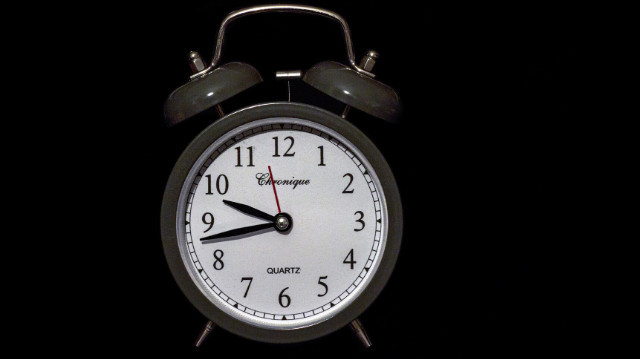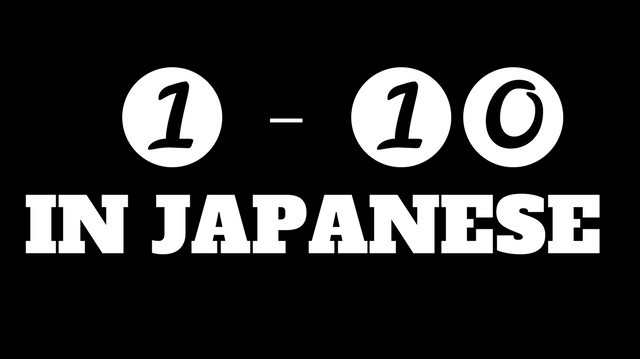Today we’re going to go over and learn the Japanese numbers 1 to 10. If you’re just starting out with Japanese, then these are probably going to be the most useful numbers that you learn.
However, there is one catch… There are multiple ways to say each number!
The reason is because the Japanese language has their own, native way to say each number, and it also has an imported Chinese way to say each number.
This has to do with the fact that Japanese adopted the Chinese writing system back in the day, along with thousands and thousands of Chinese words.
Including numbers. Let’s get started and learn them now!
Japanese Numbers 1, 2, and 3
In Japanese, the most common way to say the numbers 1, 2, and 3 are as follows:
- 一 (ichi)
- 二 (ni)
- 三 (san)
Let’s go into more depth on each of these now.
As you can see from the above list, the number one is written in kanji as 一 which is just a single line. That should make it pretty easy to remember.
It is read as いち (ichi) which is the Chinese reading of the number.
I should probably tell you now that the Chinese readings of the numbers are used most often.
There are a couple of situations where the Japanese readings get used, but for the vast majority of the time it’s the imported version.
I’ll give you the Japanese readings of these numbers too, but if you only walk away remembering one of them, then be sure to make it the more common Chinese ones.
At any rate, the Japanese reading for the number one is ひと (hito) and can be seen when using the universal counter 一つ (hito tsu).
As for number two, it is read at に (ni) and it is also pretty easy to remember in kanji because it is just two lines 二 like that.
I actually think that this one is the easiest to remember, because if you’ve learned the hiragana に (ni) and the katakana ニ (ni) then the kanji 二 (ni) fits right in with them.
In fact, it looks almost identical to the katakana version, but if you put them right next to each other there is a slight difference in the spacing of the lines.
As for the Japanese reading, it is ふた (futa) like in the counter 二つ (futa tsu) which means “two things” in Japanese.
Now we get to the number three which maintains the pattern of one line per number. In kanji, it is 三 and the way that you say it is さん (san).
Don’t let this confuse you with the honorific word さん that gets attached to the ends of people’s names for respect.
They’re different words, although they are read the same way.
The Japanese way to say this number is み (mi) or sometimes みっ with the little stop sound right after it. Keeping in line with our counters, we see 三つ (mittsu) for “three objects” in Japanese.
The Japanese Number 4

The Japanese number four gets special attention because unlike the other words in this post, this one actually uses the Japanese reading more often than the Chinese one!
Why is that?
Well, it’s because the Chinese reading for 4 is し (shi) which is the same sound as the root of the word as 死ぬ (shinu) which means “death” in Japanese.
Because of that, the number four is seen as bad luck in Japan, just like how number 13 is unlucky in America.
Sometimes you will get into an elevator in Japan, and there are no number 4’s anywhere!
Since the Chinese version of this word has those negative connotations, it is common to use the Japanese readings for it. The kanji for the number is 四 (yon) and as you can see from the parentheses it is read as よん (yon).
Another common Japanese reading is よ (yo) which gets used when telling the time and in our running example that is used for a number of objects 四つ (yottsu).
Japanese Numbers 5, 6, and 7
Unfortunately for these next three numbers, there aren’t any good patterns that make them easy to learn like we saw with the first three.
The number five is written as 五 (go) and is typically read as ご (go). One way that might help you remember this is that this kanji also gets used as part of the kanji for “language” 語 (go) which has the same reading.
So, if you know the word 日本語 (nihongo) which means “the Japanese language” and you recognize the link between the two kanji 五 and 語 then that might help you out.
The Japanese reading for 5 is いつ (itsu) as in the word 五つ (itsu tsu).
Then we head on over to six in Japanese which is spelled as 六 (roku) and read as ろく (roku). As for this one, I guess you’ll just have to learn it through repetition.
The Japanese way to say it is む (mu) and our counting pattern is 六つ (muttsu).
The number seven is a little bit different from the others because it’s actually pretty common to use both of its readings. It is spelled in kanji as 七 and the Chinese reading is しち (shichi) while the Japanese reading is なな (nana).
Personally, I think the Japanese way that you say it sounds pretty cute, and you might even hear it used as a nickname for a young Japanese girl.
Our counter is 七つ (nana tsu).
Japanese Numbers 9 and 10

We’ve finally come to the last two numbers in our list.
The kanji for nine is 九 (kyuu) and is normally read as きゅう (kyuu) except for when you are talking about the time of day. In that case, it gets changed to く (ku).
The Japanese way to say it is actually ここの (kokono) and our counter is 九つ (kokono tsu).
Lastly, we get to the number ten which is a pretty easy kanji to remember. It is 十 (juu) which looks like a cross. The Chinese reading for it is じゅう (juu) and the Japanese reading for it is とお (too).
What’s interesting about the Japanese version of the word is that it uses an irregular spelling in hiragana.
Typically, when there is a second “o” sound in hiragana it is represented with the う symbol which means “u” on it’s own, but maintains the elongated “o” in these cases.
But as you can see from above, we use an お in this spelling.
Something else that is interesting is that our running counter that we’ve been using gets changed. When counting ten things, all you have to use is 十 (too). You actually don’t use the つ (tsu) part like all the others.
What About Zero?
The number zero is special in Japanese because there are three different ways to say it, and it all depends on the context of where it appears!
Furthermore, there are specific rules that have to be followed for one of the versions, which can be tricky to remember at first glance.
Click here to learn how to say zero in Japanese!
If you have any questions or comments, let me know!
Further Resources for Learning Japanese:
#3 Get My eBook (Secrets to Learning Japanese) for Free

またね!

Thank you for the lesson, I will be back for more.
Yoku Dekimashita, well done
i like it
Hey man, it is my pleasure! I am glad you got some value out of it. (^_^)b
I needed a refreshment course. thank you again
Anytime! I’m happy to help! 🙂
Hey Nick, this is a very good technique that you teach to help people remember number pronunciation in Japanese. It never really crossed my mind that you can do it this way as the numbers kind of flow naturally with Mandarin language which I am familiar with.
My challenge was actually remembering dates and days of the week as I know they have special kanji for them. Do you have any technique for remembering these words? Thanks.
Hey Cathy, yeah there are some great ways to remember the different days of the week. Which is good since they are used quite often in everyday conversation. I’ll write up a full post on it soon to help!